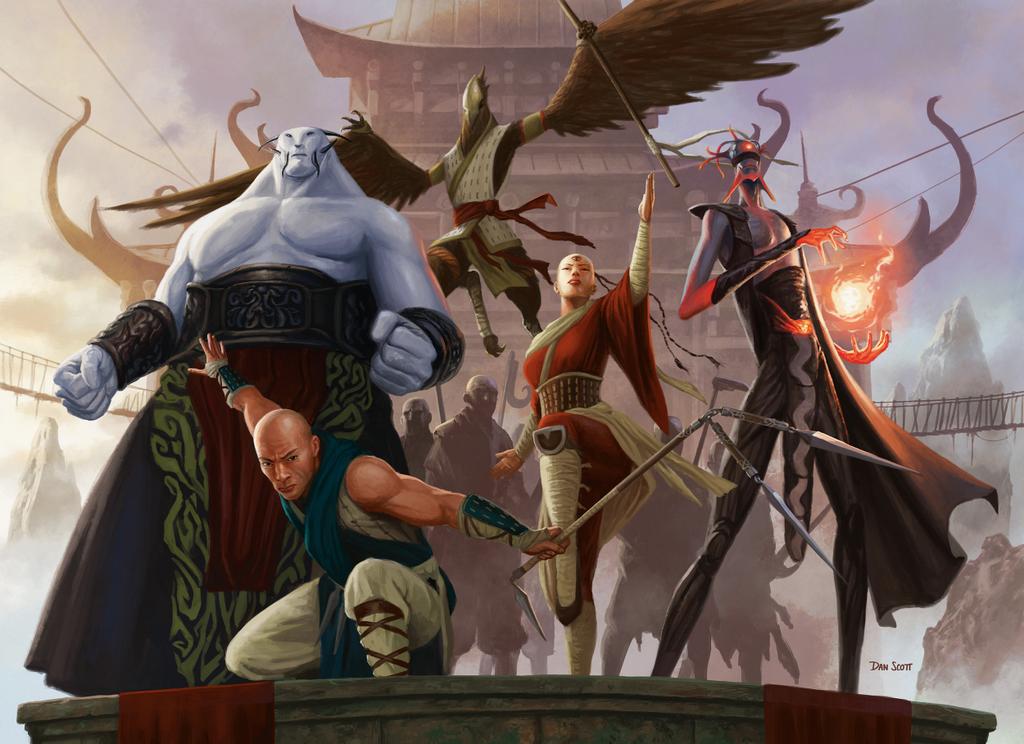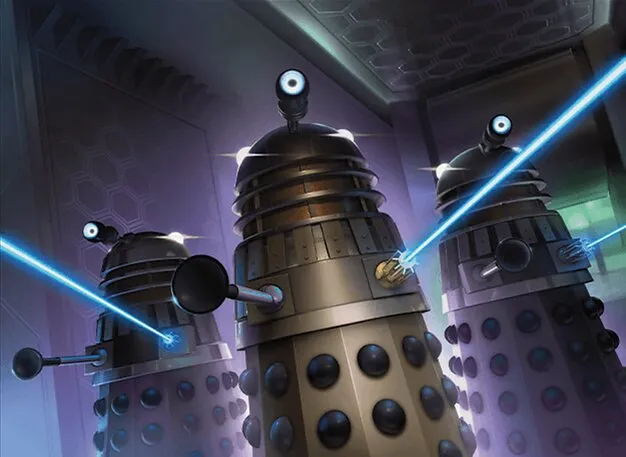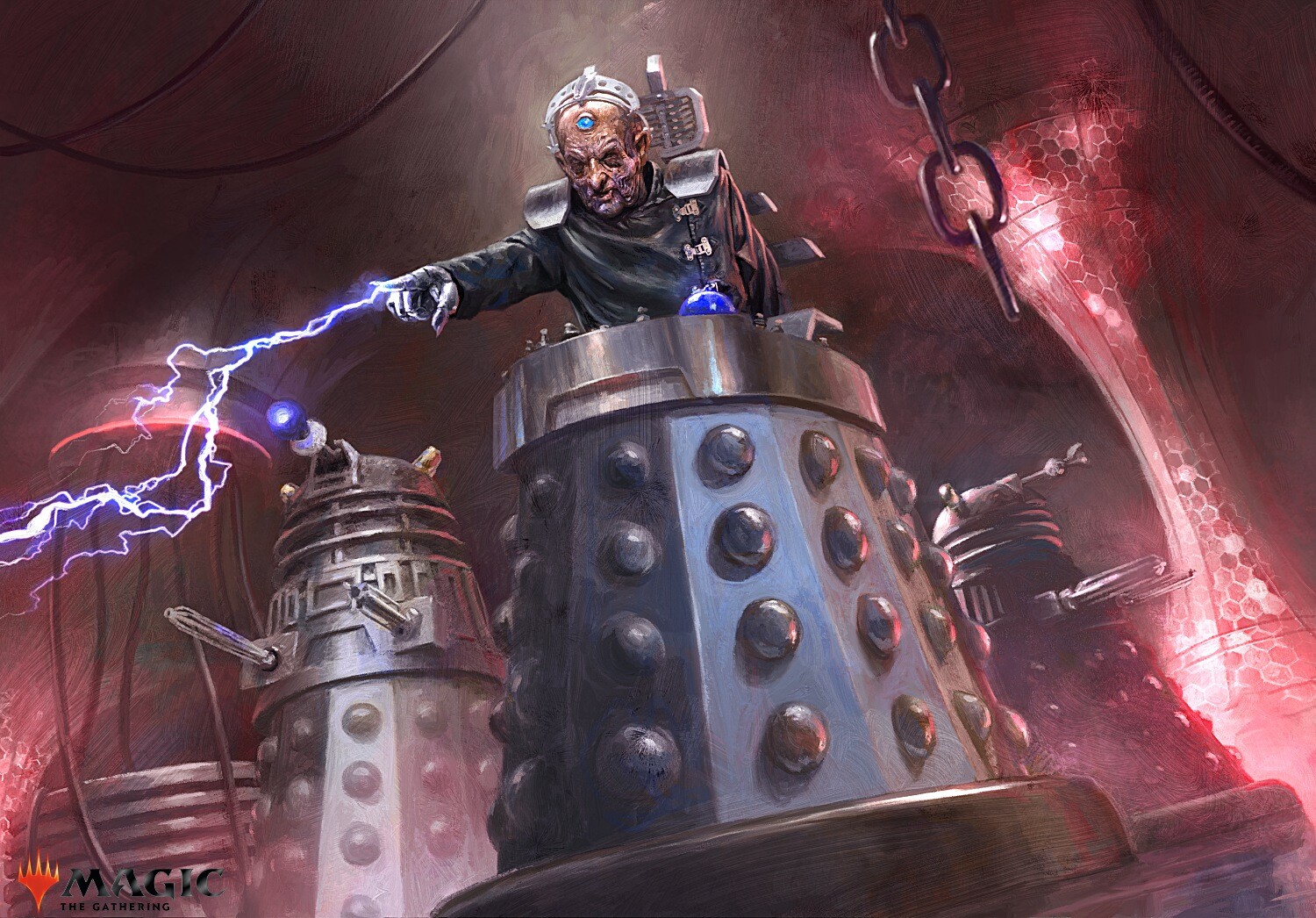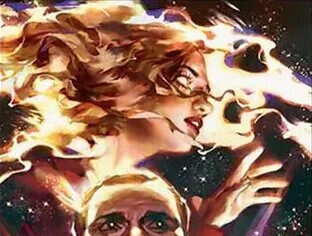To Ban or Not to Ban that is the Question
By Daniel Clayton – the Will of the Floral SpuzzemShuffling Up
If you look at most of the formats that are currently (except draft, but draft’s special), one thing you might notice is a sizable list of cards that are restricted associated with them. Today, I want to start off with talking about a couple of the cards that are currently banned. Then, we’ll take a look at why Wizards bans cards. Finally, we’ll wrap up withby talking about current events relating to bannings (namely talk of soon to be banned cards and cards that players have been calling for a banning of for a long time).
Stricken from History
It’s interesting to go through and look at the various card restriction lists for the various formats, because of how much they change from format to format. There are cards that are eternally restricted in every format such as Black Lotus, some that are restricted in lower formats but open to play in higher formats such as Ancestral Vision, and some that are restricted in higher formats but open in lower formats such as Trinisphere. Let’s just look at some of these cards and try to understand why they were restricted when they were. First, let’s talk about the first restricted cards in Magic’s history, the cards that have stayed in this spot since 1994 are Shahrazad and the Ante cards. The reason for the banning of these cards was that Shahrazad often times made tournaments run way too long causing a series of games within a game. Ante cards made you ante or gamble cards against your opponent meaning that the game could no longer be played by kids and also allowed you to skirt the 60 card minimum to your deck if you ran 1 in your deck without playing ante. The other two cards on the original ban list were Time Vault, a card that has had its rules text changed more times than any other card in the game, and Divine Intervention simply due to it not seeming like a fun card for players (Tying games doesn’t really feel good). I’m sure there are some readers out there pointing out at this point that Standard doesn’t have a banned list, but that’s why I said that all formats, except for draft and sealed, have card restrictions, and this does hold true for Standard. Its card restriction list is all of the cards not currently in Standard. Let’s talk about some of the more modern card restriction lists. In modern, a couple of the cards that you have are Brainstorm and Ponder, Second Sunrise, Jace, the Mind sculptor, Skullclamp, and Mental Misstep. The first cards that we’re going to talk about are Brainstorm and Ponder. The banning for these two cards came after a modern season with a showing of Storm that was just too strong and fast for other decks to compete with. The field became almost untenable for other decks in the format and it wasn’t too long before Brainstorm and Ponder were on their way to being banned. The next card on my list is Second Sunrise, and as a player who’s played against the Eggs decklist in tournament, it’s a good fit for the modern banned list. The Eggs deck was just way too oppressive when it had its time in the sun. It was a deck that would take up an entire round worth of time to go off and was very hard for other players to respond to. Jace, the Mind Sculptor is a strong card that finds itself a home in many Legacy, while Skullclamp is a card that was deemed too strong for even Legacy and found itself a banning in the format. These cards are banned for power level reasons; they just make certain decks far too powerful for other decks to compete with them. Understandably, the power level of the two is different, but both have the ability to completely warp the format. Jace, the Mind Sculptor has the ability to maintain a game state extremely efficiently, being able to both control your opponent’s draw, having the ability to remove creatures from the field, a draw engine and even having the ability to act as your win condition if you can maintain the board state well enough. It’s pretty obvious that this card is a great addition to control, but Skullclamp acts as the foil to this card making aggro decks completely warped. The idea behind why it breaks decks is that all deck archetypes are supposed to have some fundamental weakness built into the deck, and for agro decks, the weakness is that they run out of cards pretty frequently. Skullclamp is just too much of a fixer for this problem and breaks Modern aggro too much. It’s in the mindset of Wizards of the Coast that every deck archetype should have a weakness, and for aggro that weakness comes in the form of a very limited draw base, with decks running out of cards a lot to keep the deck balanced against other deck builds. This is exactly the problem Skullclamp fixes for those decks. Finally, there’s Mental Misstep, a card that is almost a hex against faster decks in the format and can be run in any deck for its phyrexian mana allowing decks to do things that they shouldn’t be able to do.
Breaking Banned Cards
Now that we’ve talked about some of the more restricted cards in the game and why they’re restricted, we begin to see a few trends emerging from the whys of the various cards that are restricted. Magic is a game and the first reason that cards tend to get banned is for making the game un-fun for players, an excellent example of this is the card Second Sunrise. We mentioned the Eggs deck before, but just mentioning it doesn’t do just to the shear amount of pain that opponents would feel while playing against the deck. It was a combo that would take almost a whole round of time to go off and had your opponent just sitting there for a long period of time. The second reason that cards get banned is for the health of a particular format. Wizards of the Coast has long maintained that to keep the game fun there should be a variety of decks in a format, so that players may while still being competitive be able to use various decks. This can be seen through the cards Brainstorm and Ponder, cards that made one deck archetype far too powerful in the format, or through Jace, the Mind Sculptor, a card that made playlists that weren’t Blue control a hard deck to succeed with. The third major reason that cards get banned is if a card is so good that it can be run in any deck and does something that the deck shouldn’t be able to do. This principle can be seen though Mental Misstep, a card that found a home in almost the entire format before its banning. There is one more suspected principle, but we’ll examine its validity in the next section.
Scrying the Modern banned list
The last principle and one that I want to talk about before we talk about our first suspected future banned card. The principle of price is one that people always hint at when people guess at what are going to be banned next. The justification for this believed principle is that high price is something that bars individuals from entry into a format and this may in some way be hurting the health of a format. I personally disagree with this idea, because there will always be replacements for the “most expensive” cards, and banning these cards could cause general mistrust from the secondary market in Wizards of the Coast’s ability to maintain the prices of their products. Additionally, Wizards of the Coast (or more importantly in this case, Hasbro) is still a business and the ability to pump up their sales exponentially is to include 1 or 2 of these expensive cards in their set. Nonetheless, the first cards that everyone always tries to shove onto this list are the fetch lands. I doubt that this will happen as Wizards just released a set chock full of these cards, and players have the ability to pick up any number of them at less than $20 a card, and I feel that this is the best way to deal with cards that are “too expensive”. As a player, I feel that banning these cards would be inherently bad for the game and hurt it in ways that many of us may never understand. The cards changed the game forever when they were printed, allowing 3 to 5 color decks to be run in multiple formats (even if they’re still rarer), and allowing 2 color decks to become far more consistent than they would be otherwise. On top of the various consistent decks that these cards bring to the table, they also bring advantages to mono-colored decks and have hidden cards that they combo with that just add to the complexities of the card. All of this basically means is that while these cards are very powerful cards that have far-reaching effects on the game, and a price tag to match, they also contribute much to the health of the game and as such I hope that they do not earn themselves a banning or restriction at any point in the near future. It looks like Wizards of the Coast is going to answer my hopes with exactly what I want also, as a reboot of Zendikar is right around the corner (supposedly with a reprint of the enemy fetches) and with the ally fetch lands just being printed in Khans of Tarkir. Tarmogoyf is a card that falls perfectly in line with the fetch lands; it works well in combination with them and falls into an even higher price gap than the fetch lands. Same as the fetches though, it looks like Wizards Is more than happy to reprint this card and I’m even looking forward to seeing another iteration of it in Modern Masters II that is supposed to be happening at some point in the near future. The other 3 cards that are supposedly on the chopping block are Jeskai Ascendancy, Treasure Cruise, and Dig Through Time. Dig Through Time has been making a powerful showing and has made appearances in decks throughout the Modern format. It does help control and combo decks quite a bit, but having played against it, I like the fact that its ability can’t be played too early and acts as a foil to cards like Snapcaster Mage, and Past in Flames that typically want to keep cards in the yard. The card is a strong contender for sure, but I feel that it hasn’t quite earned itself a banning even with it being so good. Treasure Cruise is in a different boat, while Dig Through Time has made a strong showing in Modern, Treasure Cruise has made a strong showing in all formats. If we look at history, Wizards doesn’t like players drawing 3 cards off of 1 card and for good reason, just look at Brainstorm. The card is powerful, and while like its counterpart Dig Through Time, I’m not sure letting this card run free is such a good idea. Still, whether it gets banned or not a year or two from now, I don’t see it getting banned in the immediate future. The last card we have to talk about is Jeskai Ascendancy, this is a card that I absolutely loved when I first saw it, thought that if someone figured it out it would be broken and it is.
Jeskai Ascendancy Combo by Sam Pardee [Modern]
This deck has been boasting an impressive, consistent turn 2 or 3 win rate. The basic idea of the deck is to get Jeskai Ascendancy and a mana producer such as Birds of Paradise, Noble Hierarch, or Sylvan Carytid online, and then just win. The mana producers not only play well into the combo, but can also act as an accelerant for your deck. The land-base needs to be straight-forward for the deck, either being fetches, lands that tap for any colors, lands that count as green (for the mana-producers) and one of the colors for Jeskai Ascendancy. Most of the sorceries and instants in the deck are just draw for your deck, with the instants pulling double duties for cool creature effects like haste or untap and also mana acceleration with the Ascendancy and some creatures. The Ascendancy also acts as a filtering engine on top of its untap ability, allowing you more filtering power. The biggest piece of secret tech for this deck is the Glittering Wish, it can count as an answer to a question you didn’t even know you had to answer, counts as 4 extra Jeskai Ascendancy’s in your deck, and in this decklist is also your only way to access your win condition. In the board are mostly targets for Glittering Wish, the only other 2 cards in the board besides these solutions are Leyline of Sanctity, a solution to a lot of decks including the deck I currently use in Modern, and Swan Song, because it’s a pretty good solution to control. The question is, is this deck too good for Modern? My answer is yes, probably. Combos like this are of the speed and consistency of Affinity, and unless we are about to enjoy a season that will see a ton of unbannings, we are about to see a Modern season that will see at least a banning. So that brings the next question, will Jeskai Ascendancy see banning? My answer to this question is almost an affirmative no. We can look at the history of the ban list for proof. When Wizards thought Jund was too powerful for Modern did they ban Tarmogoyf? No, they banned Bloodbraid Elf. What about when they thought Affinity too powerful, a banning of Cranial Plating or even Arcbound Ravager? Nope, let’s ban artifact lands and Disciple of the Vault… to be fair banning Disciple of the Vault is probably more relevant to the deck than the rest of the cards, but still. It can be shown that pretty consistently if Wizards thinks that a deck is too powerful, they will ban a card that is typically used as a major piece of the deck without getting rid of the engine that allows the deck to function. Another quality that these cards should possess is the fact that the card is run almost exclusively in the deck and a banning won’t affect other decks too much. There is a card in the deck that fits the bill on all of these and that is Glittering Wish. Through the banning of this card the consistency of win for the deck would drop and even the deck’s ability to find its combo would be hampered. Additionally, this card is one that doesn’t see that much play in the format besides this deck.
Wrapping Up
In today’s article, we took a look at the modern banned list. What it takes to get on it, some of the cards that are on it and why they’re there, and some potential future additions to the list. In our next article we’ll aim to look at what makes a good card store, a good card store.
By Daniel Clayton – the Will of the Floral Spuzzem
@DC4VP on Twitter





